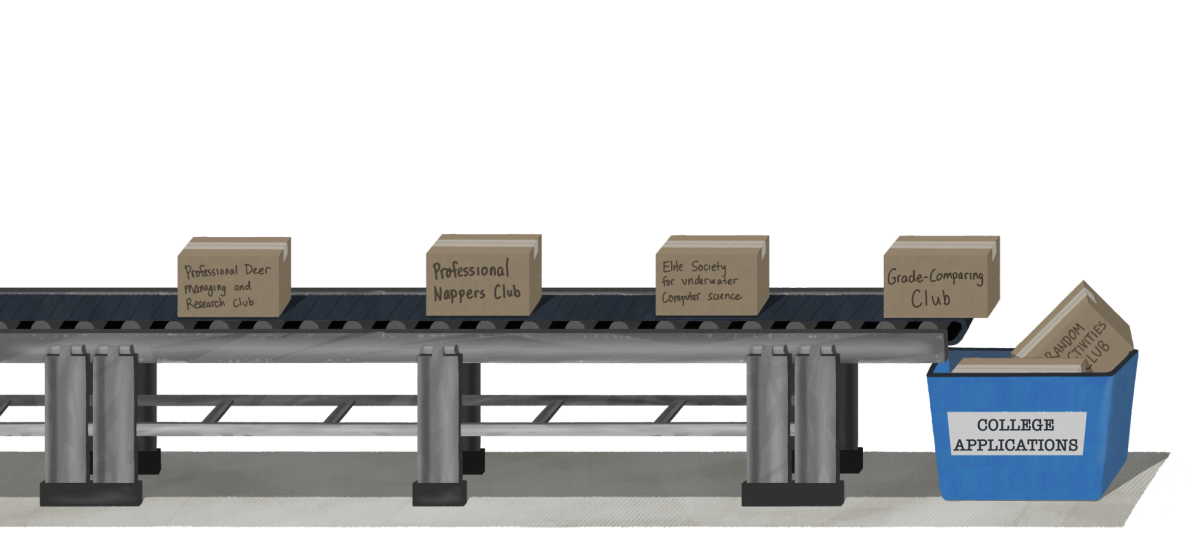By Lena Ye
Honors classes and lanes at PAUSD start early. In seventh grade, all students are divided into two levels of math: Pre-Algebra 7 and 7A. The “A” stands for accelerated, and students are sorted based on a recommendation from their sixth grade math teacher. In eighth grade, the trend continues, and in ninth grade, laning is further expanded with the division of science and English classes. While the district is currently looking at combining or eliminating lanes, honors classes are an important fixture of academic curriculum at Gunn and should be upheld. Honors classes enable students to learn at their own pace, rejuvenate their interest in school and hold them responsible for their own learning.
Getting rid of the lanes in core subjects in freshman year will mix students of different levels of learning into the same class. The proponents of de-laning ninth grade math cite that all it will unify all freshmen in terms of level of math and enable them to choose the following year which lane they wish to enter. However, after ten years of schooling no student is at the same level anymore. Depending on time spent and extracurricular activities and summer work and a hundred different other factors, each student has a unique knowledge of math. Forcing all students to be in the same level class will not level out the inequality. It will only hurt the honors students.
Teachers will have to ignore the accelerated students and hinder their learning in order to explain concepts to the slower learners. Resources will be less efficiently allocated because teachers must accommodate for students of all different types of learning speed and knowledge. This will only hurt more advanced students, because they will have to keep the pace of the slowest learners in the whole class. Although students are allowed to move on to honors classes in the following years if they choose, their learning will be stunted because they were not given the opportunity to go into an advanced track. It is unfair to cater to simply one population while the other is neglected. Faster learners will become bored with the stale and unchallenging curriculum and will miss out on opportunities that could be otherwise afforded with honors classes.
Honors and advanced classes are a great opportunity for the students who can and want to handle them. It allows them to go above and beyond and to learn much more than the breadth of required curriculum by the state and nation. A study led by the Study of Mathematically Precocious tracking students advanced in math showed that students who had skipped a grade had more science, technology, engineering and math accomplishments than those who had not skipped a grade. Students that are adequately stimulated and challenged can cultivate a love for learning, while those who are forced to match the pace of the slower learners can become resentful and lack motivation.
Honors classes enable students to make a choice about their style and rigor of learning. These classes allow them to set their own goals and bestow upon them the responsibility of seeing their work through. They challenge faster learners and make academia exciting. Just as lower lanes are needed to accommodate slower learners, higher lanes are needed to stimulate and inspire faster learners. The focus on providing students with opportunities is as equally important for faster as it is for slower learners. Faster learners will suffer from lack of attention and a slower pace in regular classes, but students who are not doing as well will suffer likewise from feeling inadequate next to the more precocious students in the class.
In the end, the fight over laning in schools comes down to choice. The school is designated to educate students and prepare them for the world that will meet them when they graduate. Students need to take responsibility of their education and learn how to manage their time. With lanes, students will be able to experiment with varying workloads and will learn how to make decisions for themselves.






















